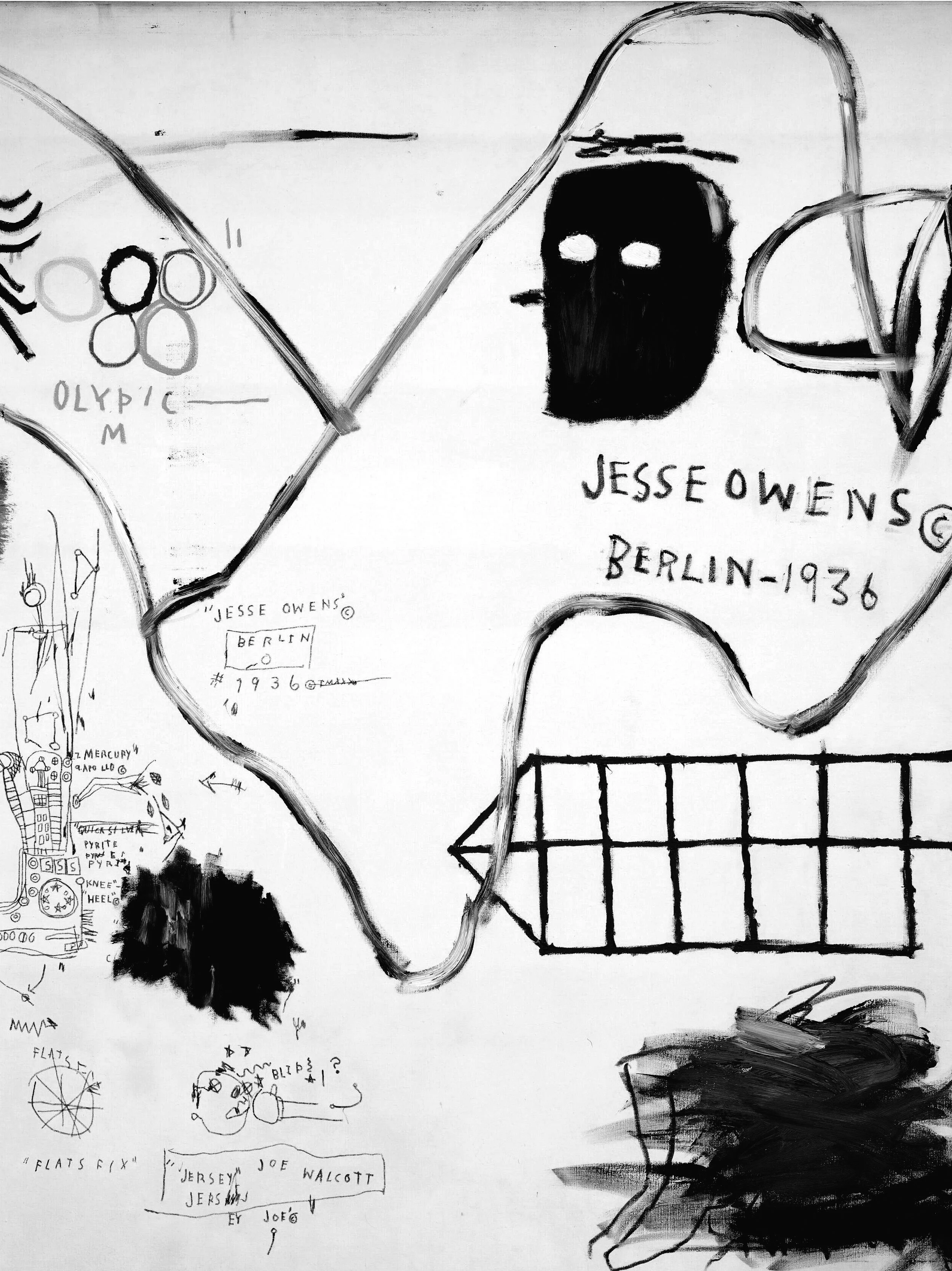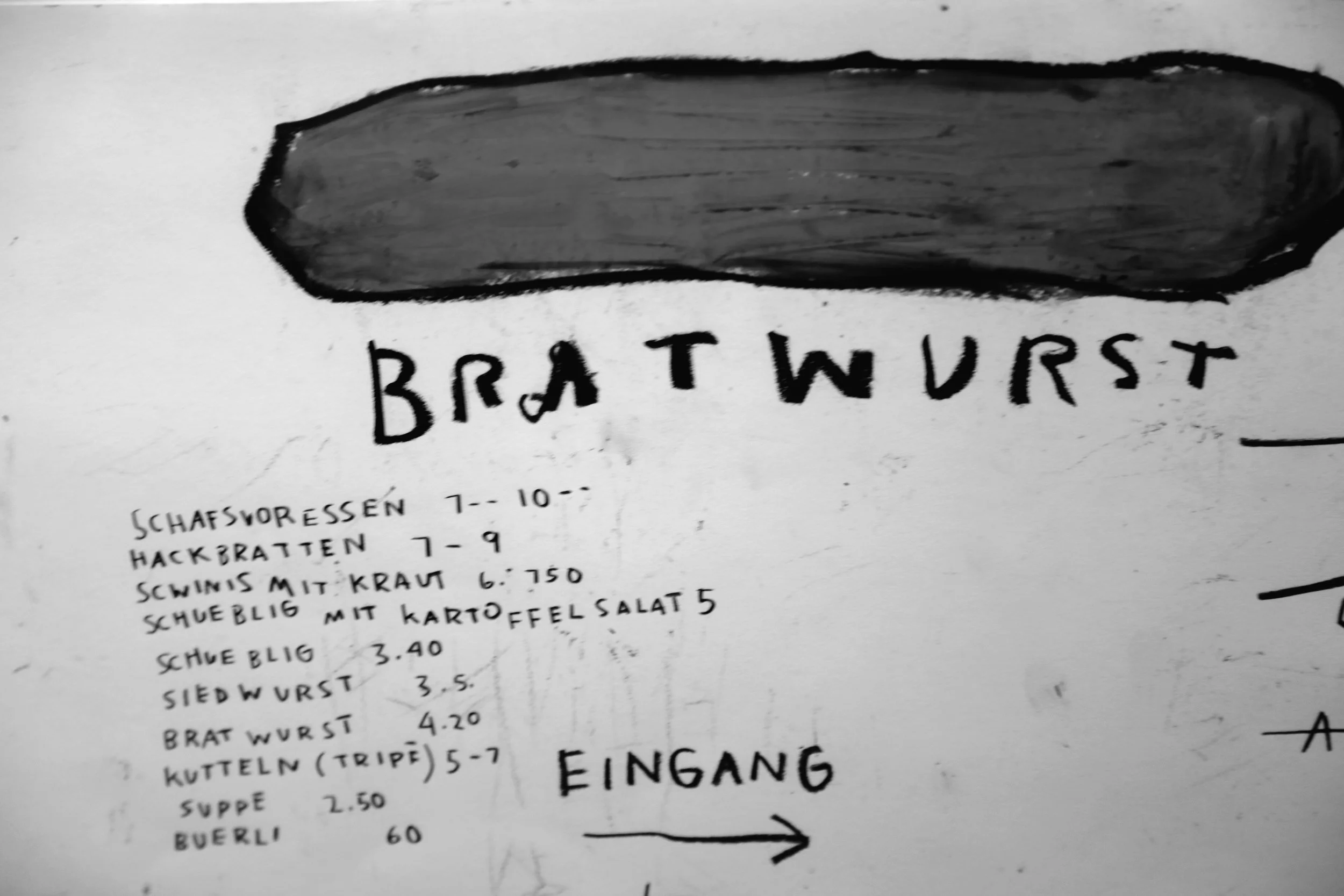Basquiat, Back in Engadin, Switzerland
Text and Photography by Mart Engelen © Mart Engelen
© Estate of Jean-Michel Basquiat, Licensed Artestar, New York
Jean-Michel Basquiat
Big Snow (Detail), 1984
Oil, acrylic, felt-tip pen and oilstick on canvas
168 x 151.5cm, Photo by Mart Engelen
The ‘Jean-Michel Basquiat.Engadin’ exhibition at Hauser & Wirth St Moritz focused on Basquiat’s little-known travels to the Swiss Alps which inspired a unique body of work rooted in this terrain.
Jean-Michel Basquiat first ventured to Switzerland in 1982, a pivotal year for him, and after his debut at Galerie Bruno Bischofberger in Zurich, Basquiat returned repeatedly, particularly to the Engadin region, drawn by its majestic natural beauty and cultural history. The frenetic energy of New York City was a counterpoint to the stillness of the Alps. As Dr Dieter Buchhart has pointed out, the unique contrast between the ‘discovery of slowness’ in the Engadin and the ‘breakneck speed’ of New York became a recurring theme in Basquiat’s work.
Jean-Michel Basquiat’s Alpine-inspired works, which were on view at Hauser & Wirth St. Moritz until March 2025, combine the visual language of the Swiss mountains with his signature artistic style. Among the highlights is ‘The Dutch Settlers’ (1982), a monumental nine-canvas painting that blends imagery of Engadin’s fir trees, mountain roads and the ibex with symbols of the African Diaspora. Other examples of Basquiat’s Swiss-inspired output include ‘Skifahrer’ (Skier) and ‘See’ (Lake), painted in St. Moritz in 1983. These works were part of a series originally intended for a hunting lodge but they later adorned the Bischofberger family’s dining room in St. Moritz. ‘Skifahrer’, with its comic-like figure on a bright red background, and ‘See’, a depiction of the local landscape at night, highlight Basquiat’s playful interpretation of Alpine life. Basquiat’s complex engagement with the Engadin region is evident in works like ‘Big Snow’ (1984) which juxtaposes snow and skiing motifs with historical themes such as Jesse Owens’ triumph at the 1936 Berlin Olympics. This interplay demonstrates Basquiat’s unique ability to integrate personal and collective narratives into his art. During his later visits, Basquiat’s work became more introspective. The monochrome series ‘To Repel Ghosts’ (1986) explores themes of emptiness and spirituality. These works reveal an artist reflecting on his experiences and the broader cultural and historical forces that shaped his life and practice. ‘Jean-Michel Basquiat.Engadin’ offered a rare glimpse into an unexpected and pivotal aspect of the artist’s work and was accompanied by a catalogue featuring essays by Basquiat experts Bruno Bischofberger, Dr Dieter Buchhart and Dr Anna Karina Hofbauer. For Basquiat, the Engadin was a place of inspiration, collaboration, and artistic growth rather than just a postcard holiday. (Hauser & Wirth St. Moritz until 29 March 2025)
Jean-Michel Basquiat
Bull Show Two, 1983 (Detail)
Mixed media on paper, 51 x 73cm
Photo by Mart Engelen
Bischofberger Collection, Männedorf-Zurich
Jean-Michel Basquiat
To Repel Ghosts, 1986
Acrylic on wood, 112 x 83 x 10cm,
Photo by Mart Engelen
Nicola Erni collection



